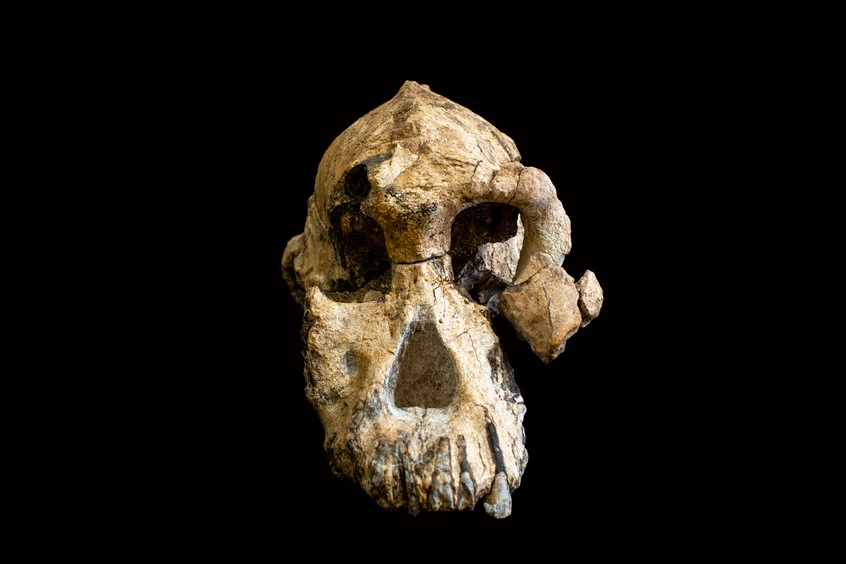 |
| Facial reconstruction of A. anamensis by John Gurche © Matt Crow, Cleveland Museum of Natural History |
What is probably the most important hominin fossil since 'Lucy' was announced by the Max Planck Institute a few days ago. Like all significant scientific discoveries, it means a revision of our understanding is now needed to accommodate this new information.
Sadly for creationists, it doesn't mean that our understanding of human evolution was fundamentally wrong, but that it was incomplete. We now know a little more and so have a better understanding of the exact path our evolution from pre-hominin ancestors took.
Regrettably, the paper in Nature by Yohannes Haile-Selassie of the Cleveland Museum of Natural History, Stephanie Melillo of the Max Planck Institute for Evolutionary Anthropology and their colleagues sits behind an expensive paywall. However, we have the detailed press release from Max-Planck-Gesellschaft.
It really is time that major papers of this importance are published open access.
 |
| 3.8 million year-old Australopithecus anamensis © Dale Omori, Cleveland Museum of Natural History |
However, this particular fossil skull, the first and near-complete skull of A. anamensis, is about 3.8 million years old, making it contemporaneous with A. afarensis in the Afar region of Ethiopia, so clearly this population of A. anamensis could not be ancestral to it. This doesn't, of course, preclude the possibility that an earlier population of A. afarensis evolved in isolation into A. afarensis rather than both species evolving from a common ancestor. This latter interpretation is in fact the one favoured by the research team.
We used to think that A. anamensis gradually turned into A. afarensis over time. We still think that these two species had an ancestor-descendent relationship, but this new discovery suggests that the two species were actually living together in the Afar for quite some time. It changes our understanding of the evolutionary process and brings up new questions - were these animals competing for food or space? Did they follow what appear to have been a regular pattern of human evolution when two species coexisted in the same area and interbred, behaving much like a ring-species?
This view also opens up the question of how these two species coexisted. Did they occupy different niches in terms of food and shelter or did they compete?Stephanie Melillo, co-author.
Max Planck Institute for Evolutionary Anthropology
Max Planck Institute for Evolutionary Anthropology
What we have here is an example of how science progresses by forming provisional opinions which are then replaced or modified by subsequent discoveries. New information in the system produces new, improved views. Followers of the creation vs evolution argument will recognise the contrast between science and creationism where the latter tries to fit new information into pre-existing views, then finds reasons to dismiss the new information if it doesn't meet the requirement.
For creationism, the conclusion is sacred, regardless of the evidence; for science the evidence is sacred but the truth is always provisional. Tweet
The difference is the difference between certainty at any price, and truth without the delusion of certainty.

No comments:
Post a Comment
Obscene, threatening or obnoxious messages, preaching, abuse and spam will be removed, as will anything by known Internet trolls and stalkers, by known sock-puppet accounts and anything not connected with the post,
A claim made without evidence can be dismissed without evidence. Remember: your opinion is not an established fact unless corroborated.